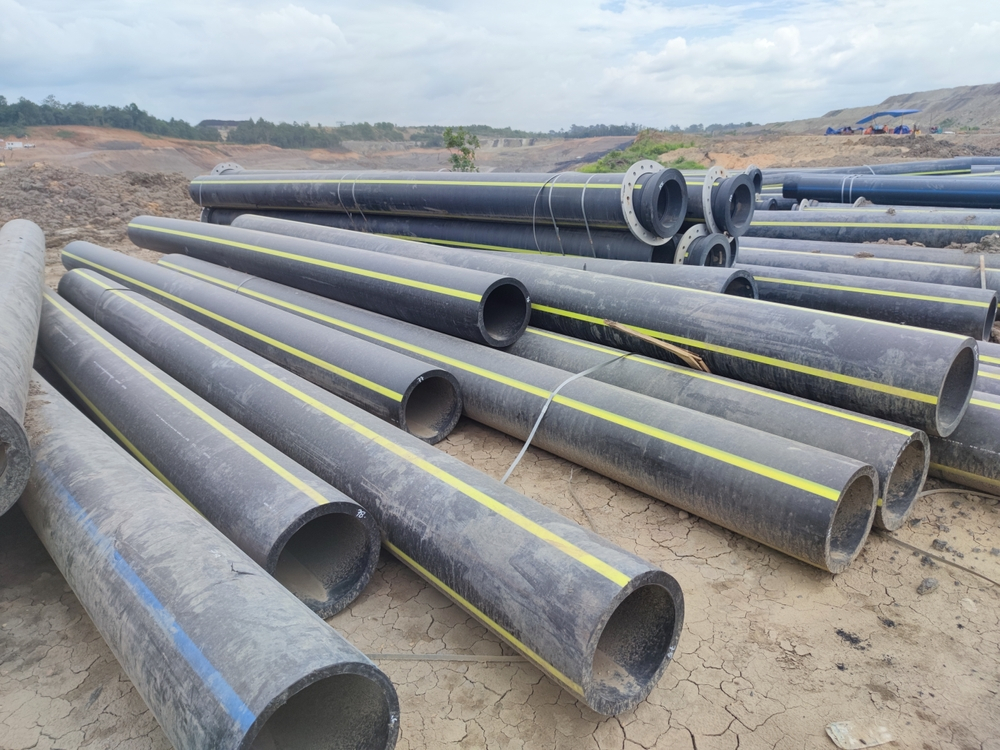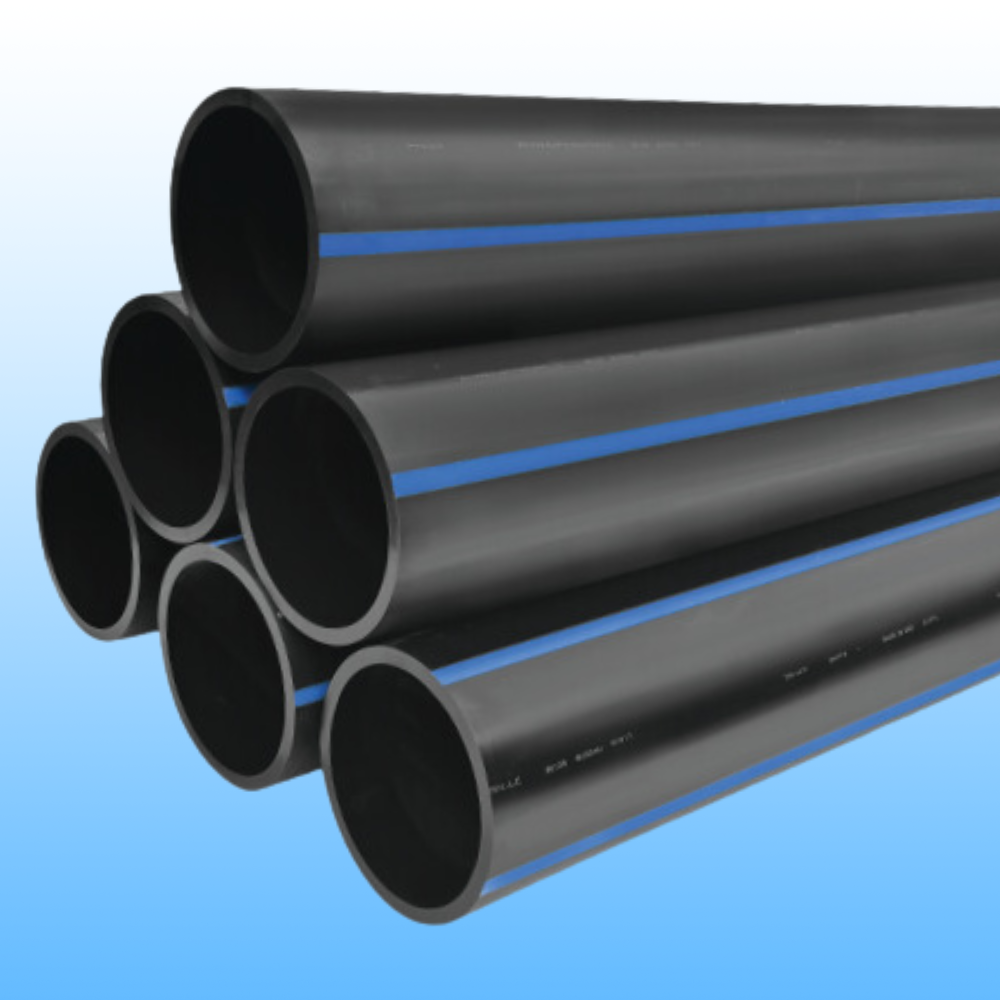How Midland TX HDPE Pipe Fittings in Stock Save Time
Discover the Manufacturing Refine Behind High-Quality HDPE Pipe and Its Applications
The manufacturing procedure of high-grade HDPE pipes is complex and systematic. It begins with the choice of raw products that enhance efficiency. Following this, ethylene undergoes polymerization to develop material, which is then formed via extrusion. Quality assurance is extremely important, making sure that the final item satisfies rigorous standards. The trip of HDPE pipelines does not end with production. Their applications throughout numerous sectors disclose a broader value worth checking out.
Comprehending HDPE: Properties and Advantages

High-density polyethylene (HDPE) is a versatile polycarbonate recognized for its resilience and resistance to different ecological variables. This product exhibits outstanding tensile toughness, making it suitable for demanding applications. Its low-density structure adds to a light-weight item, helping with ease of taking care of and installation. HDPE additionally showcases remarkable resistance to chemicals, which decreases degradation when exposed to harsh compounds.
The material's low wetness absorption better enhances its longevity, making it suitable for usage in pipelines and storage tanks. Additionally, HDPE is resistant to ultraviolet (UV) radiation, ensuring that products maintain their integrity also when revealed to sunshine. Moreover, its flexibility allows for the development of complex shapes without compromising toughness. The eco-friendly nature of HDPE, usually originated from recycled materials, contributes to its allure, advertising sustainable practices in production. On the whole, these residential properties and advantages make HDPE a recommended choice for various industrial and customer applications.
Resources Option for HDPE Production
The selection of basic materials for HDPE manufacturing is vital to verify the final product satisfies the preferred specifications and quality requirements. High-density polyethylene (HDPE) is mostly created from polymerized ethylene, acquired from nonrenewable fuel sources such as gas or petroleum. The high quality of these feedstocks substantially influences the mechanical and thermal homes of the final HDPE.
Ingredients also play a substantial duty in boosting HDPE's efficiency, including antioxidants, UV stabilizers, and colorants, which boost durability and resistance to ecological elements. The selection process have to take into consideration not only the chemical structure of the raw products yet also their processing qualities to assure efficient production.
Moreover, the sourcing of resources ought to focus on sustainability and conformity with ecological regulations, as accountable methods are crucial in today's market. Ultimately, mindful basic material choice lays the structure for producing top quality HDPE pipelines suitable for diverse applications.
The Extrusion Process: Shaping HDPE Pipe
The extrusion process plays an essential duty fit HDPE pipes, beginning with careful material preparation techniques that ensure excellent circulation and uniformity. Equally essential is the layout of the die, which straight influences the last measurements and surface area quality of the pipe. Together, these factors contribute significantly to the performance and top quality of HDPE pipeline manufacturing.
Material Prep Work Methods
Effective production of HDPE pipes starts with precise material prep work techniques, especially the extrusion process. Throughout this stage, high-density polyethylene material is initial dried out to get rid of moisture, making certain excellent circulation qualities. The resin is then fed right into the extruder, where it goes through heating and melting, transforming right into a viscous state. This home heating process is very carefully regulated to keep the product's integrity and performance. The molten HDPE is compelled with a die, shaping it right into a continuous pipeline type. Correct temperature monitoring during extrusion is essential, as it straight affects the product's residential or commercial properties and the end product quality. As soon as formed, the HDPE pipeline is cooled down and reduced to defined lengths, all set for succeeding processing and applications.
Die Layout Importance
Precision in die layout plays an essential function in the extrusion procedure of HDPE pipelines. The die serves as the last shaping device, directly affecting the pipe's dimensions, wall surface thickness, and surface area coating. A well-designed die warranties consistent material circulation, decreasing flaws such as abnormalities and weak points. The geometry of the die must be optimized to accommodate the particular residential or commercial properties of HDPE, including its thickness and thermal actions during extrusion. Furthermore, the cooling price of the material as it goes through the die can considerably impact the pipeline's structural stability. As a result, purchasing innovative die innovation is important for producers intending to generate top quality HDPE pipes that satisfy industry requirements and client expectations.
Quality Assurance Measures in HDPE Manufacturing
Although various aspects affect the quality of HDPE pipe production, effective quality assurance actions are essential to assure uniformity and dependability in the last item. Key quality assurance practices consist of strenuous product evaluation, verifying that the raw polyethylene fulfills established requirements for pureness and thickness. Throughout the extrusion process, criteria such as temperature level, pressure, and cooling time are closely kept an eye on to preserve dimensional accuracy and structural honesty
Furthermore, post-production testing is important; suppliers typically carry out hydrostatic tests to assess the pipeline's toughness and resistance to pressure. Aesthetic assessments for surface flaws better boost quality control. Certification from appropriate standards organizations, like ASTM or ISO, offers an added layer of integrity. By carrying out these complete quality assurance measures, suppliers can reduce flaws, enhance efficiency, and make sure that the HDPE pipes meet the particular requirements of different applications, inevitably causing client satisfaction and depend on in the item.
Applications of HDPE Pipeline Across Industries
HDPE pipes are used across numerous sectors as a result of their resilience and versatility. In water distribution systems, they guarantee reliable shipment, while in wastewater management, they give reliable options for waste transportation. Additionally, agricultural irrigation networks gain from HDPE's resistance to corrosion and flexibility, making it an excellent option for contemporary farming techniques.

Water Circulation Solutions
A significant variety of industries count on high-density polyethylene (HDPE) pipes for efficient water distribution systems. Known for their durability and resistance to corrosion, HDPE pipelines are widely used in community water supply networks, farming irrigation, and industrial applications. Their light-weight nature assists in very easy handling and setup, minimizing labor costs and time. Additionally, HDPE pipelines can suit various pressure degrees, making them suitable for both low and high-pressure systems. Midland TX HDPE Pipe Fittings in Stock. The flexibility of the material enables seamless assimilation right into existing framework, minimizing the need for substantial excavation. HDPE's resistance to chemical seeping guarantees that the water supplied stays safe and tidy, making it an optimal choice for preserving the quality of safe and clean water across different markets.
Wastewater Management Solutions
Effective water distribution systems also lead the way for innovative wastewater management solutions, where high-density polyethylene (HDPE) pipes play a substantial function. Prominent for their longevity and resistance to deterioration, HDPE pipes are suitable for delivering wastewater in different settings. Their sewer line installation adaptability permits easy installment in intricate settings, minimizing the need for extensive excavation. Additionally, HDPE's smooth interior surface area minimizes rubbing, enhancing flow prices and efficiency. These pipes are also resistant to chemical leaching, guaranteeing that pollutants do not jeopardize the surrounding setting. Industries, communities, and treatment centers progressively count on HDPE pipes for their reliability and longevity, making them a recommended option for modern-day wastewater management systems. This versatility emphasizes the vital significance of HDPE pipes throughout countless applications.
Agricultural Irrigation Networks
Agricultural irrigation networks profit significantly from the use of high-density polyethylene (HDPE) pipelines, which give efficient and reputable water delivery to crops. HDPE pipelines are lightweight, making them simple to move and set up, while their versatility enables various configurations in varied surfaces. These pipes demonstrate outstanding resistance to deterioration, chemicals, and UV radiation, making certain resilience in harsh agricultural settings. Furthermore, their smooth interior surface area reduces friction loss, maximizing water flow and lowering energy costs related to pumping. The long life of HDPE pipelines, commonly surpassing half a century, adds to lower upkeep and replacement expenditures. Subsequently, farmers progressively count on HDPE pipes to improve watering performance and advertise lasting agricultural techniques, eventually causing improved crop yields and resource conservation.
Future Patterns in HDPE Pipeline Modern Technology
As the need for sustainable and effective infrastructure expands, innovations in HDPE pipeline innovation are poised to transform numerous industries. Emerging trends consist of the combination of clever technologies, such as sensors and IoT capacities, which promote real-time monitoring of pipe problems, lowering maintenance costs and protecting against leaks. Furthermore, the growth of sophisticated manufacturing strategies, such as 3D printing, is allowing the production of complicated, tailored pipe designs that deal with particular task needs.
The emphasis on recycling and circular economic situation techniques is driving the advancement of HDPE pipelines made from recycled materials, improving sustainability. Improved jointing techniques, such as electro-fusion and mechanical fittings, are additionally boosting setup performance and integrity. The growing emphasis on ecological policies is pushing manufacturers to take on greener production processes, ensuring that HDPE pipes not only satisfy sector requirements yet also foster a more sustainable future for infrastructure advancement.
Regularly Asked Inquiries
How Does HDPE Contrast to Various Other Plastic Materials?
HDPE outperforms numerous other plastic materials pertaining to longevity, chemical resistance, and versatility. Its reduced thickness and high tensile toughness make it perfect for different applications, frequently going beyond options in both performance and long life.
What Are the Environmental Impacts of HDPE Production?
The ecological impacts of HDPE manufacturing consist of greenhouse gas discharges, power consumption, and possible pollution from making processes. In addition, improper disposal can lead to soil and water contamination, elevating issues concerning long-lasting ecological effects.
Can HDPE Pipes Be Reused?
Yes, HDPE pipes can be reused. Several centers accept made use of HDPE for handling, changing it right into new Read Full Report products. This reusing contributes to sustainability efforts, reducing plastic waste while conserving sources and power in the manufacturing cycle.
What Is the Life-span of HDPE Piping?

How Do Temperature Variants Influence HDPE Pipe Performance?
Temperature level variations pipe fasteners substantially affect HDPE pipeline performance, affecting adaptability and toughness. High temperature levels can result in softening, while reduced temperatures might create brittleness, inevitably affecting the pipeline's longevity and viability for different applications in varied settings.